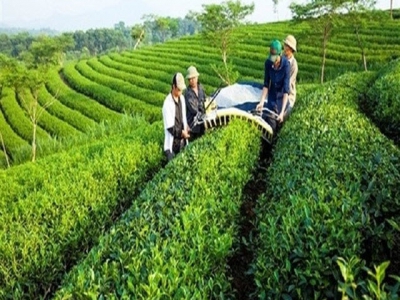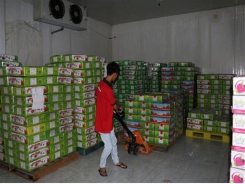Chinese scramble to collect tea leaves, competing with local producers

Tea producers complain that it has become difficult to collect raw materials because Chinese businesses have flocked to cultivation areas to collect tea leaves directly from farmers.
Tea producers complain it has become more difficult to collect materials
“Vietnam’s tea industry is now upset,” said Nguyen Thi Anh Hong, secretary general of the Vietnam Tea Association, at a recent annual meeting of the PPP Working Group under the Sustainable Development of Agriculture Vietnam (PSAV).
Vietnam has 130,000 hectares of tea growing areas, located in 34 cities and provinces nationwide. One hectare of ordinary tea can bring income of VND20 million and one hectare of high-yield tea VND60-90 million.
Hong said the exchange rate fluctuations do not have big impact on the tea industry, but it is becoming more difficult for tea companies to sell tea.
Vietnam has 130,000 hectares of tea growing areas, located in 34 cities and provinces nationwide. One hectare of ordinary tea can bring income of VND20 million and one hectare of high-yield tea VND60-90 million.
Also according to Hong, more Chinese businessmen from companies registered under Vietnamese names have appeared in material growing areas to collect tea and offer offer high purchase prices.
While domestic companies can pay VND20,000 for one kilogram of tea leaves, Chinese pay VND30,000.
Eighty percent of tea output is exported to many markets.
Chu Xuan Ai, director of the Tan Binh Technology & Trade Development, said his company exports products to Russia, where Vietnam’s tea is more expensive than China’s and is preferable. Some Chinese traders label their products as Vietnamese products to sell at higher prices in Russia.
Exports on the decrease
Reports showed that in July 2018, Vietnam exported 10,000 tons of tea products worth $18 million, raising the total export amount in the first seven months of the year to 67,000 tons, worth $109 million, a decrease of 12.9 percent in quantity and 9.3 percent in value compared with the same period last year.
Vietnam’s major markets in the first half of the year were Pakistan, which imported $29.9 million (32.8 percent of total exports), Taiwan $12.6 million (13.8 percent), Russia $11.1 million (12.1 percent).
Vietnam’s tea also went to China ($7.2 million), Indonesia ($4.4 million) and the US ($3.8 million).
The first half of the year witnessed the resurgence of Pakistan, the biggest export market for Vietnam. The exports in June 2018 rose sharply by 62.8 percent over May and 62.5 percent over June 2017.
As such, the exports to the market in the first half of the year increased by 1,300 tons, or 10.9 percent compared with the same period last year.
The Philippines is the emerging market for Vietnam. Its imports in the first half increased by 8.4 times and import value by 21.7 times in the first half, though the country is not among Vietnam’s 10 major markets.
Có thể bạn quan tâm
Phần mềm

Phối trộn thức ăn chăn nuôi

Pha dung dịch thủy canh

Định mức cho tôm ăn

Phối trộn phân bón NPK

Xác định tỷ lệ tôm sống

Chuyển đổi đơn vị phân bón

Xác định công suất sục khí

Chuyển đổi đơn vị tôm

Tính diện tích nhà kính

Tính thể tích ao hồ



 From a hot, dry, barren land to an…
From a hot, dry, barren land to an…  No notable changes in new rice export regulations
No notable changes in new rice export regulations